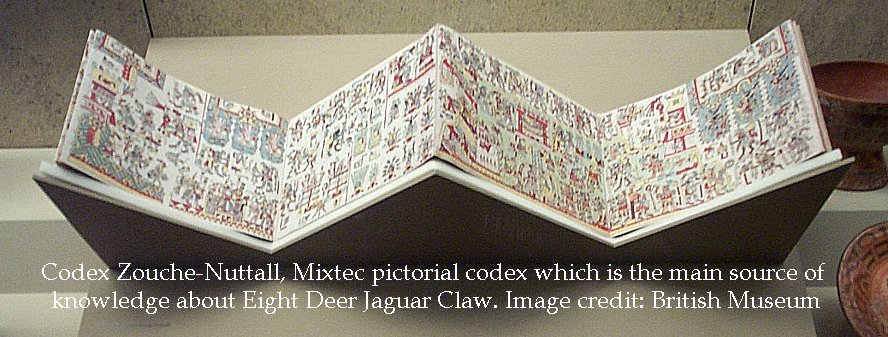The Mixtec – Mysterious Very Advanced Culture Of The Foremost Goldsmiths Of Mesoamerica
A. Sutherland - AncientPages.com - The Mixtec people called themselves the Ñuu Savi - "People of the Rain" and lived in three mountainous areas of present-day Oaxaca in Southwestern Mexico.
Their homeland was the Mixteca.
The Mixtec never built large cities similar to Tula or Teotihuacan, but instead lived and worked in smaller settlements in neighboring valleys.
From left: Mixtec Codex, (Latin American Studied.org); Turquoise mosaic mask. Mixtec-Aztec, 1400-1521 AD/British Museum; Plate 37 of the Codex Vindobonensis. The central scene supposedly depicts the origin of the Mixtecs as a people whose ancestors sprang from a tree; Mixtec Rain God (Wikipedia)
Much about the pre-history of these people is unknown but archaeological evidence shows that the culture flourished between 940 and 1500AD. Around 1350 AD, the Mixtecs took over control of the sacred, ceremonial site of Monte Alban, near the present-day city of Oaxaca, from the Zapotecs, who ruled Monte Alban for some about 12 centuries.
Later, archaeological evidence revealed that Monte Alban’s interior, especially Tomb No.7, contained lavish burial treasures of gold, silver, pearls and turquoise.
They were a complex society, which unlike other cultures had a continuous history that goes from the Preclassic (from at least 1500 BC), until the end of the Postclassic (900 AD and the Spanish arrival in 1519).
Interior of the Mixtec tomb, archaeological site at Zaachila, Oaxaca, Mexico. Image credit: El Agora/Wikipedia
In the 10th century, several Mixtec kingdoms were established, in which lived classes of nobles, artisans and peasants. Later, during 500-750 AD, the Mixtec created urban centers and developed a calendar, monumental architecture, terrace agriculture, impressive irrigation systems, and glyphic writing. Their most important and one of the oldest settlements in Oaxaca, was Tilantongo and the Mixtec picture codices tell stories about its kings.
Much place is devoted to one of the greatest of the Mixtec dynasties, the Tilantongo dynasty, established upon the marriage of two nobles in the holy Mixtec city of Tilantongo in 990 AD and Lord 8 Deer (also known as Eight Deer Jaguar Claw), a powerful Mixtec ruler 11th century Oaxaca referred to several Mixtec manuscripts, especially, the 15th-century deerskin manuscript "Codex Zouche-Nuttall"
However, only eight of the original Mixtec historic documents survived until today.
The chest plate (or chimalli) was made by Mixtec craftsmen using components such as gold and turquoise. The Mixtecs were masters in making gold and metal objects.
The Mixtecs’ legacy includes many more amazing achievements. For example, these people were considered the foremost goldsmiths of Mesoamerica," who mastered the ‘lost-wax casting’ of gold and its alloys, which resulted in remarkable gold work and the art of jewelry (necklaces, pectorals, rings, earmuffs and nose rings). The art of designing with feathers is also included in their rich legacy.
Another Mixtec achievement is a writing system of written signs and pictures that influenced other Mesoamerican cultures. The system was used to record (on deerskin) historical and cultural events such as the births, marriages and deaths of nobles, wars and victories, and other important events that affected the Mixtec society.
See also:
Mystery Of Monte Albán – Ancient City ‘At The Foot Of The Heavens’ Built By The Zapotecs
Aztecs: Facts And History About The Ancient And Powerful Mesoamerican Civilization From Aztlán
Dresden Codex – The Oldest And Best Preserved Book Of The Maya
Aztec Empire: ‘Tlatoani’ – The Ruler With The Ultimate Power In The Land
Aztecs: Facts And History About The Ancient And Powerful Mesoamerican Civilization From Aztlán
During their large expansion, the Aztecs conquered many lands in Mexico and Mesoamerica through wars.
The Mixtec were one of them; many died in sacrifices and some of the most skilled craftsmen moved to the Aztec capital, Tenochtitlan, to create new wonders in gold for their new rulers. The Mixtec nobles – as the other conquered lands - were obliged to pay tribute to the rulers in Tenochtitlan.
Today, they are considered the fourth largest group of native peoples of Mexico, after Nahua, Mayan and Zapotec - among the most numerous Indian towns of Mexico.
Written by – A. Sutherland AncientPages.com Staff Writer
Copyright © AncientPages.com All rights reserved. This material may not be published, broadcast, rewritten or redistributed in whole or part without the express written permission of AncientPages.com
Expand for referencesReferences:
Spores R. Sr., Balkansky A. K. The Mixtecs of Oaxaca
More From Ancient Pages
-
 Mysterious Great Dismal Swamp – Why Can No One Find The Cemetery Twice?
Featured Stories | Apr 2, 2021
Mysterious Great Dismal Swamp – Why Can No One Find The Cemetery Twice?
Featured Stories | Apr 2, 2021 -
 Advanced Ancient Technology: Could Ancient Peruvians Soften Stone?
Ancient Technology | May 7, 2015
Advanced Ancient Technology: Could Ancient Peruvians Soften Stone?
Ancient Technology | May 7, 2015 -
 Three 1850-Year-Od Stone Ossuaries Prevented From Looting Near Kafr Kanna In Galilee
Archaeology | Jun 21, 2023
Three 1850-Year-Od Stone Ossuaries Prevented From Looting Near Kafr Kanna In Galilee
Archaeology | Jun 21, 2023 -
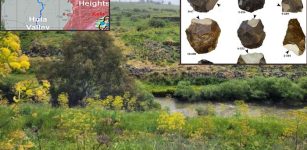 Early Humans In The Hula Valley Invested In Systematic Procurement Of Raw Materials Hundreds Of Thousands Of Years Ago
Archaeology | Jul 19, 2023
Early Humans In The Hula Valley Invested In Systematic Procurement Of Raw Materials Hundreds Of Thousands Of Years Ago
Archaeology | Jul 19, 2023 -
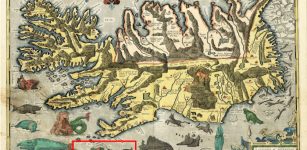 Ancient Manuscripts About Sea Monsters Solve An Ocean Mystery
News | Mar 1, 2023
Ancient Manuscripts About Sea Monsters Solve An Ocean Mystery
News | Mar 1, 2023 -
 Unique 8,400-Year-Old Burial Of A Dog Different From Modern Dogs Discovered In Sweden
Archaeology | Sep 25, 2020
Unique 8,400-Year-Old Burial Of A Dog Different From Modern Dogs Discovered In Sweden
Archaeology | Sep 25, 2020 -
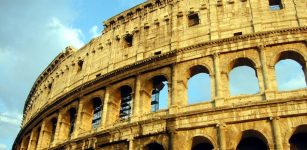 Pax Romana: 200-Year-Long Period Of Stability Within The Roman Empire
Ancient History Facts | Apr 19, 2016
Pax Romana: 200-Year-Long Period Of Stability Within The Roman Empire
Ancient History Facts | Apr 19, 2016 -
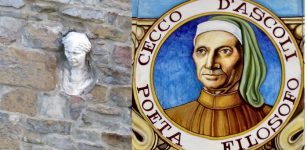 Mysterious La Berta – ‘Petrified’ Stone Head And The Curse Of Cecco d’Ascoli Who Was Burned At The Stake
Featured Stories | Jul 29, 2019
Mysterious La Berta – ‘Petrified’ Stone Head And The Curse Of Cecco d’Ascoli Who Was Burned At The Stake
Featured Stories | Jul 29, 2019 -
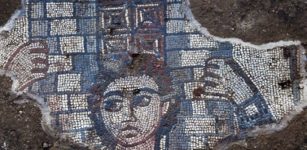 Mosaics Discovered In Ancient Galilean Jewish Village
Archaeology | Jul 10, 2018
Mosaics Discovered In Ancient Galilean Jewish Village
Archaeology | Jul 10, 2018 -
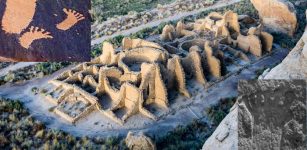 Ancient People In Chaco Canyon Who Had Six Fingers And Six Toes Were Special – Researchers Say
Archaeology | Mar 16, 2022
Ancient People In Chaco Canyon Who Had Six Fingers And Six Toes Were Special – Researchers Say
Archaeology | Mar 16, 2022 -
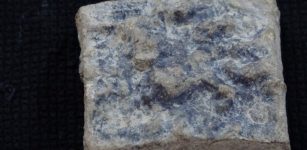 2,300-Year-Old Roman Lead Weight In Assos Is The Largest Ever Discovered
Archaeology | Aug 15, 2023
2,300-Year-Old Roman Lead Weight In Assos Is The Largest Ever Discovered
Archaeology | Aug 15, 2023 -
 Power Of Water In Beliefs Of Ancient Cultures
Featured Stories | Apr 9, 2019
Power Of Water In Beliefs Of Ancient Cultures
Featured Stories | Apr 9, 2019 -
 Coca-Cola Was Invented As A Cure For Headache And Hangover In The 1880s
Ancient History Facts | Oct 23, 2017
Coca-Cola Was Invented As A Cure For Headache And Hangover In The 1880s
Ancient History Facts | Oct 23, 2017 -
 Mystery Of The Hidden Wooden Hieroglyphic Tablets And The Unknown White Bearded Men – The Civilization That Died Twice – Part 2
Civilizations | Mar 6, 2021
Mystery Of The Hidden Wooden Hieroglyphic Tablets And The Unknown White Bearded Men – The Civilization That Died Twice – Part 2
Civilizations | Mar 6, 2021 -
 Puzzling Construction Of Unique Sunken Ship From The 17th Century Examined
Archaeology | Jul 28, 2022
Puzzling Construction Of Unique Sunken Ship From The 17th Century Examined
Archaeology | Jul 28, 2022 -
 Izanagi And Izanami In Shinto Beliefs And How They Created The World
Featured Stories | Mar 28, 2019
Izanagi And Izanami In Shinto Beliefs And How They Created The World
Featured Stories | Mar 28, 2019 -
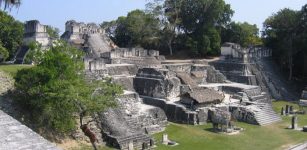 Ancient Maya Built Sophisticated Water Filters To Obtain Drinking Water
Archaeology | Oct 23, 2020
Ancient Maya Built Sophisticated Water Filters To Obtain Drinking Water
Archaeology | Oct 23, 2020 -
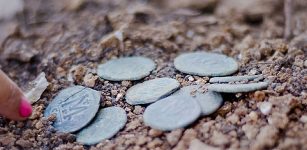 Nine 1,400-Year-Old Coins Belonging To Christian Pilgrims Found On The Highway To Jerusalem
Archaeology | Mar 24, 2017
Nine 1,400-Year-Old Coins Belonging To Christian Pilgrims Found On The Highway To Jerusalem
Archaeology | Mar 24, 2017 -
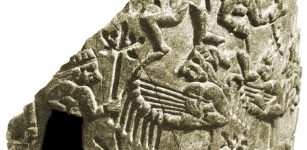 Lugal-Anne-Mundu: ‘King Of The Universe’ And Powerful Leader Who Restored Sumer To Its Former Glory
Civilizations | Oct 1, 2016
Lugal-Anne-Mundu: ‘King Of The Universe’ And Powerful Leader Who Restored Sumer To Its Former Glory
Civilizations | Oct 1, 2016 -
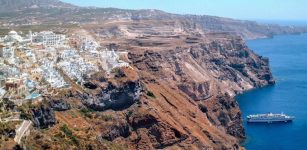 Scientists Attempt To Solve An Ancient Greek Volcano Mystery
Archaeology | Sep 20, 2022
Scientists Attempt To Solve An Ancient Greek Volcano Mystery
Archaeology | Sep 20, 2022




